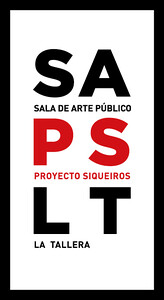Pablo Helguera, Jose Alejandro Restrepo, SANGREE
Proyecto Siqueiros: La Tallera & Sala de Arte Público Siqueiros presents three new fall exhibitions that include the first thematic survey of Mexican American artist Pablo Helguera’s work, that looks into his performatic practice, at La Tallera in Cuernavaca, and new productions of Colombian artist Jose Alejandro Restrepo and the Mexican artist collective SANGREE at Sala de Arte Publico Siqueiros in Mexico City.
La Tallera, Cuernavaca, Morelos, MX
Conversations for Dying a Little Less, Pablo Helguera
October 15, 2016–March 5, 2017
Conversations for Dying a Little Less is the first individual exhibition of Mexican artist Pablo Helguera that looks into part his artistic production of the last two decades, specifically in relation to his performatic practice and the role of dramaturgical structures, like opera and theater, in the production of works like The Witches of Tepoztlan, 2007, The Metropolitan Opera Bathroom, 2008, Confessions of Another Mask, 2011, Canon, 2013, Gregorio Lemercier: Dialogues with Christ, 2014, and Casa Plarre, 2015. The impact of the city of Cuernavaca in the artist’s family life and in Mexico’s intellectual class towards the end of the 20th century will be staged in Helguera’s new theatrical production Sobremesa where, through the paradigms of immersive theater, seven characters invite the public into a debate about the relationship between intellectuallity and political power in Mexico. Exhibition curated by Taiyana Pimentel in collaboration with a team of professionals from the arts and the theater, among them Jessica Berlanga and Hector Bourges.
Sala de Arte Público Siqueiros, Mexico City, MX
epiPHONY, Jose Alejandro Restrepo
October 6, 2016–February 12, 2017
Pioneer of video art in Colombia, Jose Alejandro Restrepo investigates changing socio-cultural processes that arise from situations like post-colonial clashes, where the ideology of one culture is interposed to that of an other, or from the introduction of new technologies in social life and in nature. The artist’s individual exhibition at Sala de Arte Publico Siqueiros, titled epiPHONY, is part of his research about information technologies like the cellular telephone and the structural elements that wireless communication requires. The implications that this object has on the subject, the landscape, spiritual life, informal economies, crime, pornography, and popular culture are revealing. His video essay displays situations that happen throughout the Colombia as are communication antennas that have been installed in sacred places of the indigenous communities in the Amazonian jungle, the symbolic allotment of the antennas by guerrilla groups, clandestine communication systems in prisons, and “minute sellers” in different cities.
Temporary Stone, SANGREE
October 6, 2016–February 12, 2017
The work of Mexican artist duo SANGREE (composed by Carlos Lara and Rene Godinez) has an idiosyncratic imaginary that they have constructed by combining esthetics taken from popular culture, Mexico’s pre-Columbian legacy, and visual languages that are used in social media and in publicity. The installation, Temporary Stone takes as a parting point the iconic Tlaloc monolith installed in Mexico City, and the strategies of display employed by different museums around the country to exhibit anthropological artifacts and structures. During the construction of the National Museum of Anthropology (1963–64), when it was a fact that the god of rain would be displaced from Coatlinchan, Texcoco to Mexico City, architect Pedro Ramirez Vazquez made a prototype of the monumental Tlaloc figure to see in which part of the museum it would be installed. Photographs that document the model show that it was an artwork in itself: Tlaloc’s original carvings were simplified and abstracted resulting in a temporary sculpture-model that mixed the aesthetics of Mexican geometrical modernism with that of Nahuatl art. In Temporary stone, SANGREE take into account the problem of the substitution of the sculpture-deity by a replica in its original place and its conversion into a monument that no longer represents the deity, but national identity as part of the National Museum of Anthropology’s collection. The installation liaises cinematographic-stage and amusement park visual strategies with the conceptual problems of the disposable, the fake, and the real. Both exhibitions curated by Michele Fiedler.
About Proyecto Siqueiros
A joint endeavor of Sala de Arte Público Siqueiros (SAPS) in Mexico City and La Tallera in Cuernavaca, Morelos, Proyecto Siqueiros is a platform for national and international contemporary art designed as a space that commissions new works by contemporary artists while preserving and promoting the artworks held by both venues. Launched in 2010, the project seeks to articulate reflective proposals regarding the theoretical and artistic precepts set forth by Mexican muralist David Alfaro Siqueiros; attending to the public nature of art and its social and political commitments, alongside his ever present search for experimental languages and materials.

